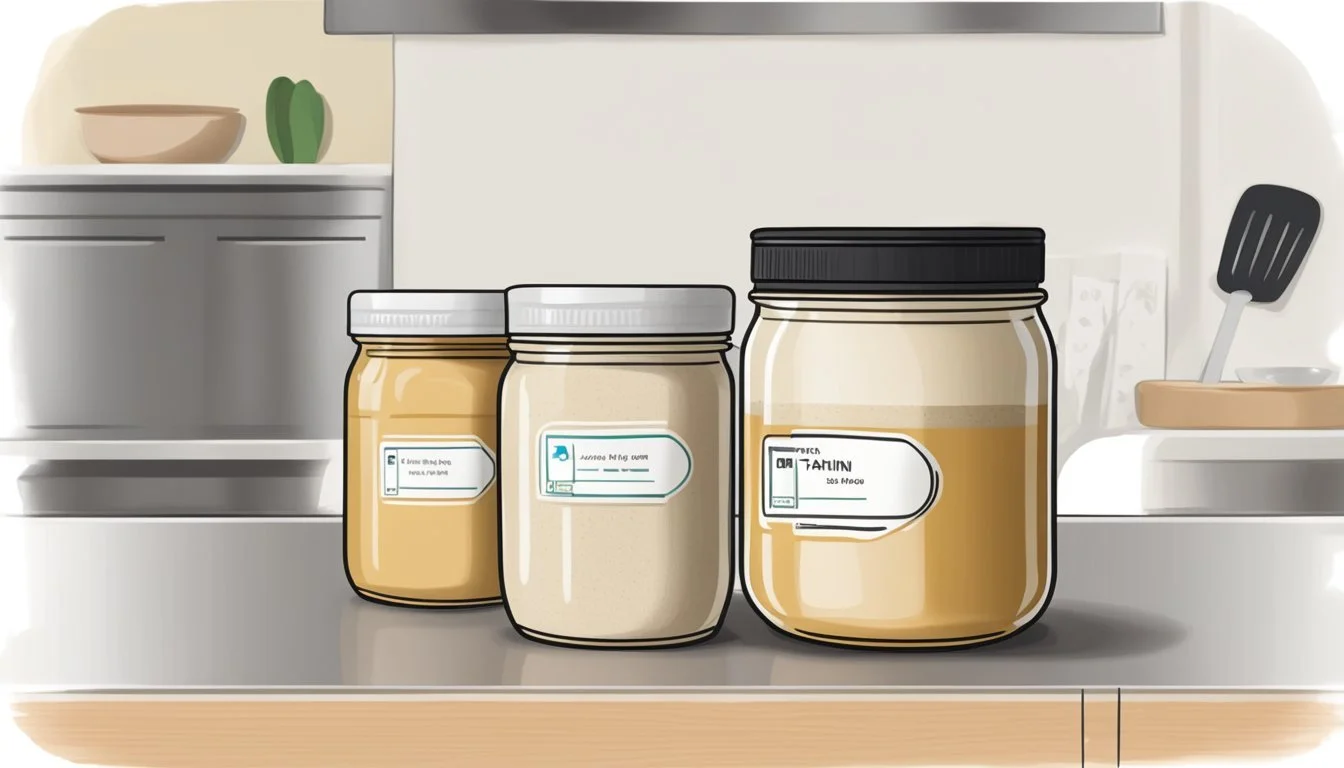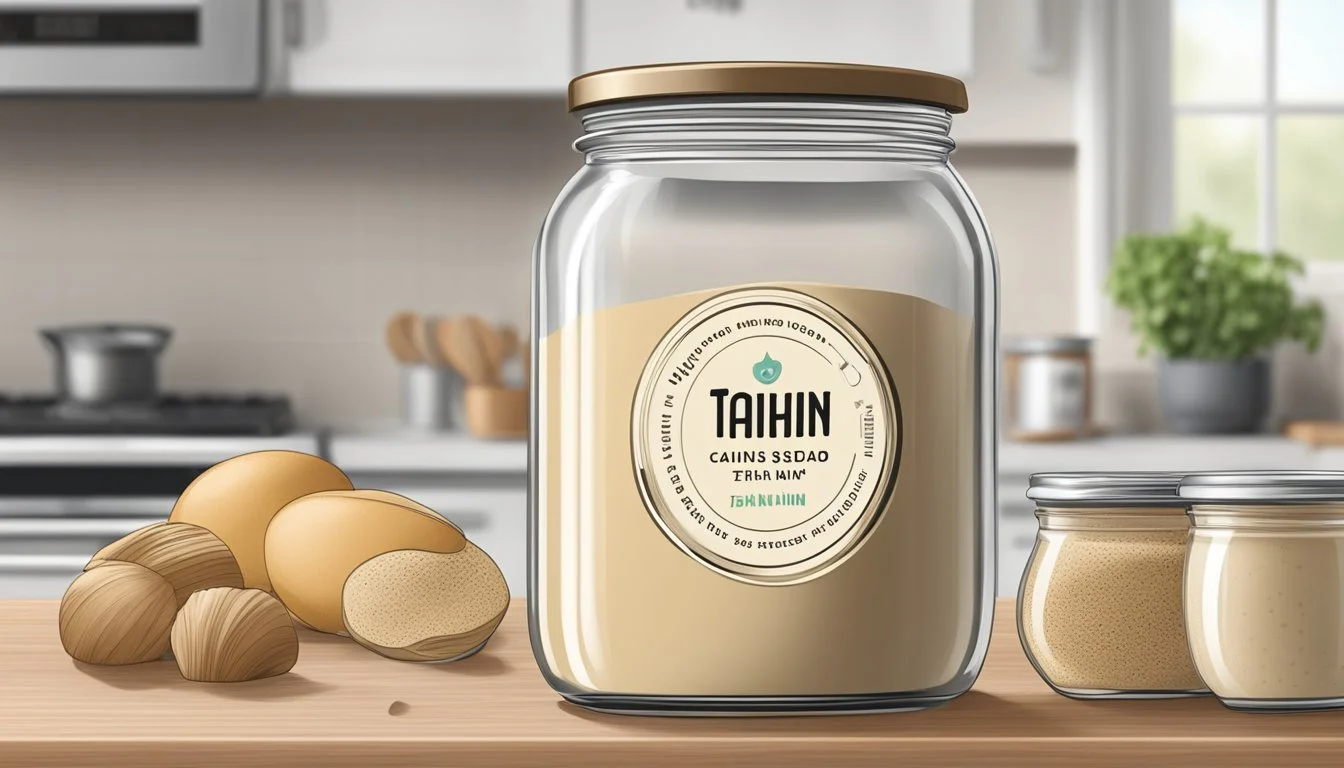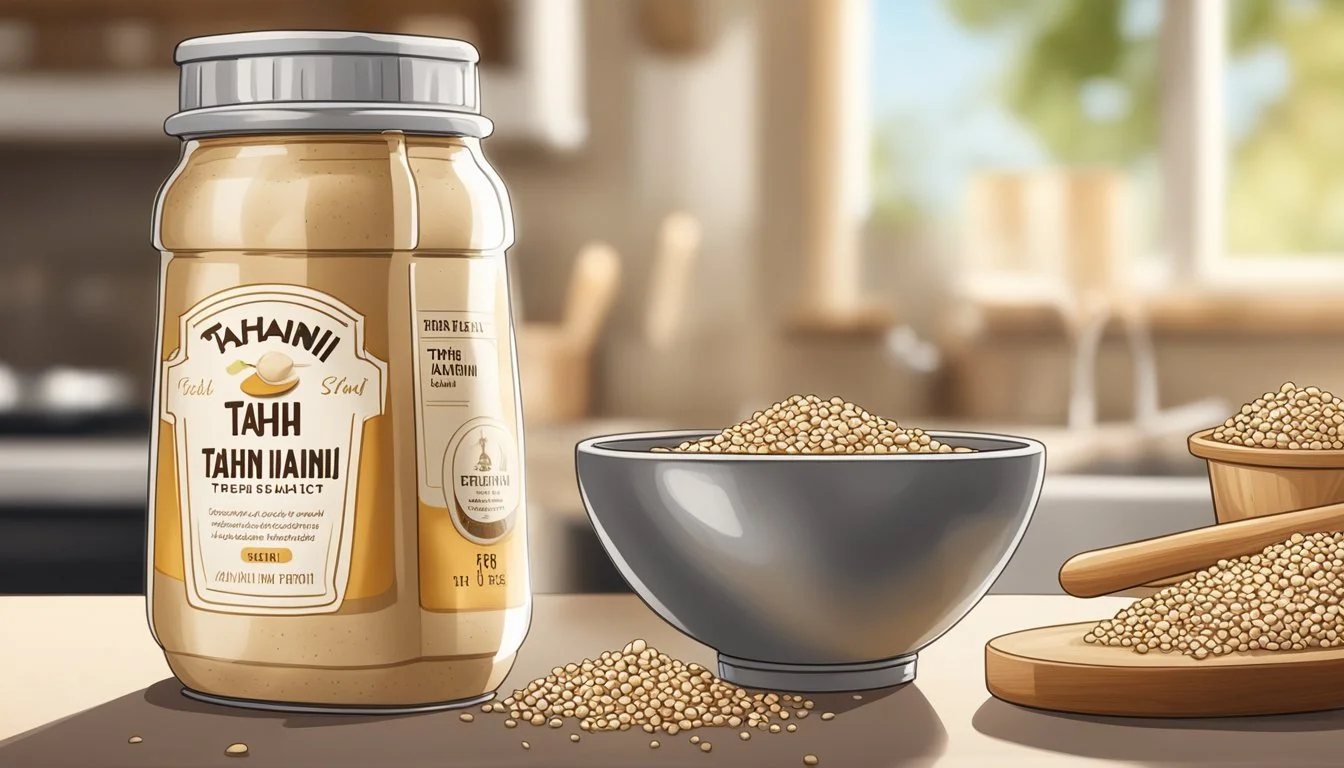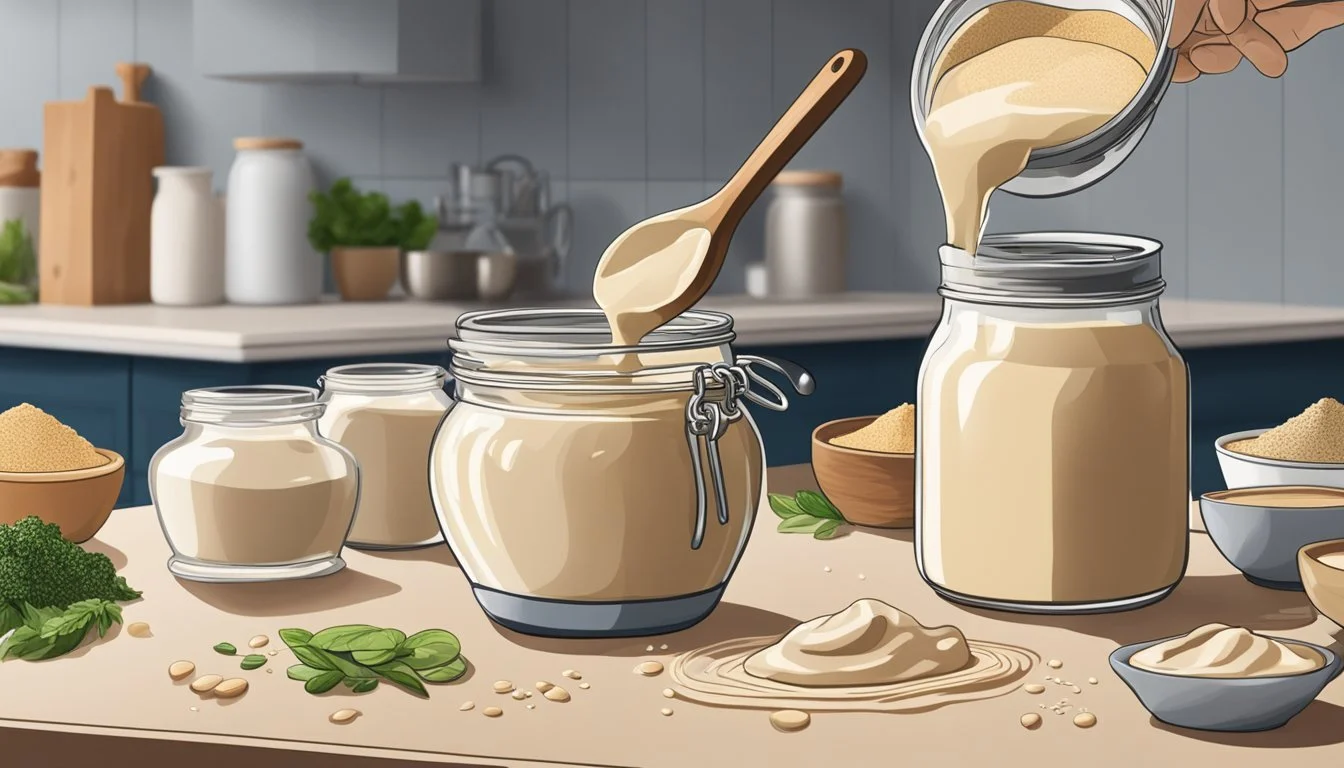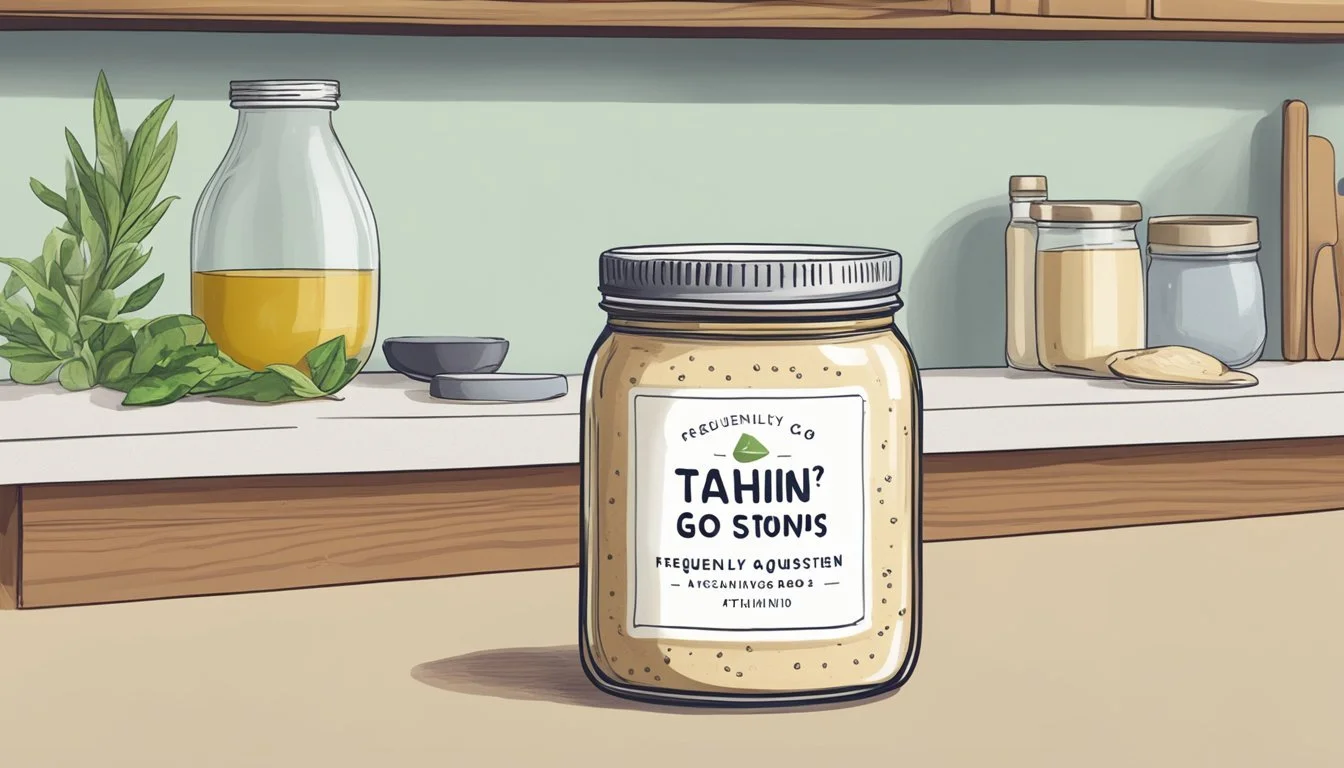Does Tahini Go Bad?
Understanding Shelf Life and Spoilage Signs
Tahini, a thick paste made from ground sesame seeds, is a staple in many cuisines, particularly in the Middle Eastern culinary landscape. Its versatility finds it a spot in numerous recipes, from dressings and dips to baking. Like any other food product, tahini does have a shelf life, although it is notably long-lasting due to its high oil content, which serves as a natural preservative.
While unopened, tahini can maintain its freshness for up to 6 months beyond its "best before" date if stored in a cool, dry pantry. Once opened, refrigerating tahini is recommended, extending its freshness for another 6 months. However, it's not immortal; tahini may still eventually go bad, especially if not stored properly. Indications of spoilage include a rancid smell, a change in texture, or, in rare cases, the appearance of mold. Recognizing these signs is crucial to ensure the tahini is suitable for consumption.
Understanding Tahini
Tahini is a versatile condiment originating from the Middle East. It is a smooth paste made from ground sesame seeds, which are rich in oils, lending to tahini's creamy texture and nutty flavor. This paste plays a crucial role in the regional cuisine, serving as a key ingredient in popular dishes such as hummus and baba ghanoush, as well as forming the base for various tahini sauces.
In its preparation, sesame seeds are hulled and toasted, then ground to create the signature tahini paste. Due to its high oil content, tahini has a relatively stable shelf life when stored properly—in a cool, dark place with a tightly sealed lid.
Here are some quick facts about tahini:
Flavor Profile: Nutty and earthy with a slightly bitter undertone.
Texture: Rich and smooth, similar to other seed and nut butters.
Usage: Often used in dips, dressings, marinades, and as a spread.
It's important to note that, while tahini's oil content helps preserve it, over time it may separate, with oil rising to the top. This is normal and can be resolved by stirring to recombine. However, like any food product, tahini can deteriorate in quality, taking on a rancid odor or changing in color. Fresh tahini typically has a light, creamy hue, but it should not be used if there are signs of spoilage or an off-putting smell.
Shelf Life and Storage
Tahini's shelf life varies depending on whether it is store-bought or homemade and whether it is opened or unopened. Proper storage in the right conditions is crucial to maintaining its quality.
Store-Bought vs. Homemade Tahini
Store-bought tahini often contains preservatives that extend its shelf life, ranging from one to three years when unopened. In contrast, homemade tahini lacks these preservatives and usually has a shorter shelf life of about one month, provided it's kept in an airtight container in the refrigerator.
Unopened Tahini
An unopened jar of tahini can be kept in the pantry for about 6 months past the 'best by' date on its label. It should be stored away from direct light and heat to prevent deterioration.
Opened Tahini
Once opened, tahini should be stored in the refrigerator in an airtight container to prevent spoilage. Opened tahini keeps well for up to 6 months refrigerated, but quality may decline over time.
Refrigeration and Freezing
For long-term storage, tahini can be frozen, effectively extending its usability beyond the typical refrigerator timeframe. When frozen, expect to retain quality for up to 12 months. To thaw, transfer the tahini to the fridge one day before use to maintain consistency and flavor.
Indicators of Spoilage
When assessing tahini for spoilage, one should be attentive to visual cues, textural alterations, and changes in taste or smell. Reliable detection of these signs can prevent the consumption of potentially spoiled tahini.
Visual Signs
Tahini should exhibit a consistent, creamy color. Visual indicators of spoilage include:
Mold Growth: Even though tahini has a high oil content which typically impedes mold, any visible mold signifies contamination.
Separation: While some oil separation is natural, excessive pooling might indicate spoilage.
Texture Changes
The texture of tahini is another important factor to consider. Signs of compromised texture are:
Thickening: Over time, tahini may thicken and lose its creamy consistency.
Dryness: If the tahini has dried out significantly, it may no longer be suitable for consumption.
Taste and Smell
Finally, the taste and smell of tahini provide crucial information:
Smell: Tahini should have a nutty, slightly earthy aroma. A foul smell or the presence of a rancid odor indicates that the fats within the tahini have deteriorated.
Taste: Any unpleasant taste or sourness suggests spoilage, and the tahini should not be consumed.
Food Safety Practices
When dealing with tahini, a sesame seed-based product, adhering to food safety practices is pivotal in preventing spoilage and bacterial growth. Consumers must be mindful of the storage conditions, particularly post-opening, to maintain tahini's quality and safety.
Storage:
Refrigeration: Once opened, it is advisable to keep tahini in the refrigerator. This chilling environment slows down the oxidation process, consequently extending its usable life.
Airtight Containers: Tahini should be stored in an airtight container to prevent contamination and preserve its integrity.
Handling:
Individuals should use clean utensils when scooping tahini from the jar to prevent the introduction of bacteria.
If tahini is processed further using a food processor, the appliance should be thoroughly cleaned before and after use.
Signs of Spoilage:
Odor: A rancid or off smell is a telltale sign of spoilage.
Appearance: Changes in color or the presence of mold indicate that tahini has gone bad.
Use of Expired Tahini:
Past the expiry date, tahini may still be consumable if it shows no signs of spoilage. However, consumers should exercise caution and rely on sensory cues before consumption.
Antioxidants: Tahini high in antioxidants can remain stable longer, but this does not supersede examining the product for spoilage.
Preservation Techniques:
The application of plastic wrap directly on the surface of tahini can reduce exposure to air and moisture, helping to preserve its freshness.
If signs of spoilage are detected, the product should be discarded promptly to mitigate any risks of foodborne illnesses.
Maximizing Tahini Quality
To ensure tahini maintains its freshness and creamy consistency, one must focus on the manner of sealing, temperature during storage, and how the tahini is handled upon usage.
Proper Sealing
Tahini's exposure to oxygen can lead to rancidity, impacting its quality. Therefore:
Always reseal the tahini container with the original lid, ensuring it is screwed on tightly after each use.
If transferring to another container, opt for an airtight container that limits the amount of air reaching the tahini.
Temperature Control
The storage temperature greatly affects tahini's longevity.
Store tahini in a cool, dark place away from direct sunlight and heat sources to prevent degradation.
For long-term storage, one can freeze the tahini. When freezing, it's advised to portion the tahini into user-friendly amounts, as repeatedly thawing and refreezing can affect quality.
Handling and Usage
How tahini is handled after opening can extend its usability.
Use clean utensils to avoid contamination with food particles, which can introduce moisture and microbes.
Minimize the time tahini is left unsealed to reduce exposure to heat and air, which can alter its creamy texture and taste.
Tips for Extending Shelf Life
When it comes to preserving tahini, proper storage is key. By limiting exposure to three main factors—air, moisture, and heat—one can significantly extend the shelf life of this versatile condiment.
Refrigeration: Store tahini in the refrigerator, as cooler temperatures slow down the oxidation process. This is especially crucial once the tahini is opened. In the fridge, tahini maintains quality for up to six months.
Airtight Containers: Tahini's exposure to air accelerates rancidity due to oxidation. It is essential to keep the container airtight after each use. If the original packaging is not resealable, transfer tahini to a container that has a tight-sealing lid.
Avoid Moisture: Moisture can lead to mold growth. Ensure the spoon or utensil used to scoop tahini is dry. Any water introduced into the tahini container can increase the risk of spoilage.
Antioxidants: Some experts suggest adding a small amount of antioxidants like lemon juice to the tahini, which can act as natural preservatives.
Vacuum Sealing: For long-term storage, vacuum sealing tahini can help extend shelf life by removing air from the container.
Ice Cube Tray Method: For convenience, portion tahini into an ice cube tray. Once frozen, transfer the cubes into a freezer bag for easy use. This method prevents thawing and refreezing, which can degrade product quality.
Remember, though these tips can help extend tahini’s shelf life, one should always check for signs of spoilage like off odors, changed colors, or mold before use.
Using Tahini in Recipes
Tahini, a versatile sesame seed paste, plays a pivotal role in various culinary applications, from enhancing sauces and dressings to enriching the flavors of baked goods and desserts.
Tahini as an Ingredient
When incorporating tahini into recipes, chefs often utilize it as a foundational element for sauces and dips. Its creamy consistency and nutty taste make it ideal for both savory and sweet dishes. For a simple yet flavorful tahini sauce, one might whisk together the paste with lemon juice, salt, and a touch of water to achieve the desired thickness. This sauce can be used as a salad dressing, a drizzle over grilled vegetables, or as a companion to falafel.
In baking, tahini can substitute for nut butters, providing a rich texture and depth of flavor. It's especially effective in cookies and brownies, often paired with maple syrup for a subtle sweetness. Tahini’s high content of beneficial fats also contributes to a silky mouthfeel in desserts, enhancing the overall sensory experience.
Creative Uses for Older Tahini
Tahini that has slightly passed its prime but shows no signs of spoilage can still be used effectively in cooking. Older tahini, which may have a more intense flavor and thicker texture, can invigorate spreads when mixed with herbs and spices, infusing new life into appetizers and snack platters.
A taste test is recommended before using older tahini in recipes. If it has thickened excessively, thinning it with a bit of lemon juice or warm water can rejuvenate its consistency. For more creative ventures, blending tahini with other ingredients like maple syrup or incorporating spices can transform it into an innovative topping for desserts. It's important to remember that while older tahini can be repurposed, one should never compromise on food safety, and any tahini showing signs of spoilage should be discarded.
Frequently Asked Questions
When it comes to tahini's longevity, consumers commonly inquire about the difference in preservation between homemade and store-bought varieties, the safety of consuming tahini past its expiration date, and how to identify if tahini has gone rancid.
Homemade vs. Store-Bought Preservation
Homemade Tahini typically lasts about one month when stored in a refrigerator, while Store-Bought Tahini has preservatives that extend its shelf life to approximately one to two years unopened. Once opened, both types should be kept refrigerated and can last for six months or more, though store-bought may last slightly longer due to added preservatives.
Safe Consumption of Expired Tahini
While expired tahini doesn't necessarily mean it's unsafe to eat, it's paramount to examine it for signs of spoilage. Expired Tahini can be safely consumed if it hasn't developed any characteristics of rancidity, such as a foul odor or change in texture. It's crucial to trust one's senses before ingesting any tahini past its labeled date.
Identifying Rancidity
To determine if tahini has gone bad, look for:
Rancid smell: Presence of a sharp, bitter odor.
Change in color: Darkening beyond its usual light cream color.
Texture change: Separation of oil that won't reincorporate or a hardened consistency.
Any of these indicators suggest that the tahini should not be consumed.

